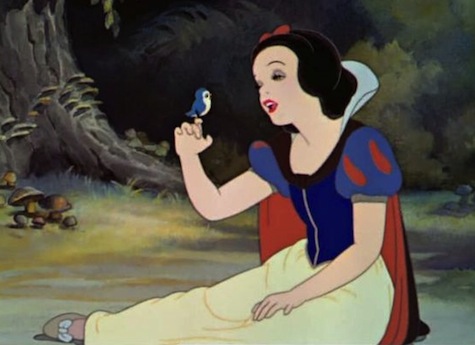“Some day my prince will come / Some day we’ll meet again
And away to his castle we’ll go / To be happy forever I know.”–“Some Day My Prince Will Come” from
Disney’s Snow White and the Seven Dwarfs
In 1974, radical feminist Andrea Dworkin wrote a book called Woman Hating, in which she discusses some of the ways in which, in her view, culture and history work to promote a hatred of women. She dedicates an entire chapter to a discussion of fairytales. In the conclusion to that chapter she writes:
The moral of the story should, one would think, preclude a happy ending. It does not. The moral of the story is the happy ending. It tells us that happiness for a woman is to be passive, victimized, destroyed, or asleep. It tells us that happiness is for the woman who is good—inert, passive, victimized—and that a good woman is a happy woman. It tells us that the happy ending is when we are ended, when we live without our lives or not at all.
Dworkin’s view is not unique, nor even the first time that the treatment of women in fairytales was explored and criticized. In her influential 1949 book The Second Sex, existentialist Simone de Beauvoir wrote, “Woman is Sleeping Beauty, Cinderella, Snow White, she who receives and submits. In song and story the young man is seen departing adventurously in search of a woman; he slays the dragon, he battles giants; she is locked in a tower, a palace, a garden, a cave, she is chained to a rock, a captive, sound asleep: she waits.”
Even if you don’t agree with their conclusions, it is difficult to read reviews of fairytales and fairytale inspired books or movies without encountering some analysis of their treatment of gender. And, when a book or movie dares to incorporate a female heroine, such as Pixar’s Brave or Disney’s Frozen, the actions and motivations of those characters are feverishly dissected and analyzed for how well they do or do not advance the genre’s historical treatment of women. Forbes entitled a 2012 review, “Brave Is Actually Quite Brave: Pixar’s Fantastic Feminist Document.” Mayim Bialik (of The Big Bang Theory fame) nearly exploded the internet recently when she questioned Frozen’s feminist credentials. And, if you’ve read some my previous articles, you will know that this author is not immune to the temptation.
So, what is it about fairytales that inspires such spirited social commentary?
Perhaps it is that these stories inhabit a unique place in our culture. They are traditionally some of the first things that we read and that are read to us, as children—and the movies based on them, and particularly the Disney film library, make up a significant part of our shared generational memories. If you’re around 30 years old, then it is likely that your childhood was defined by movies like The Little Mermaid, Beauty and the Beast, Aladdin and The Lion King (Hakuna matata, my friends!) If you are a decade younger, then Pixar’s filmography is probably your touchstone. (“Eevah” indeed, WALL-E.) As a result, people feel a personal ownership of these fairytales that they don’t feel for less universal stories.
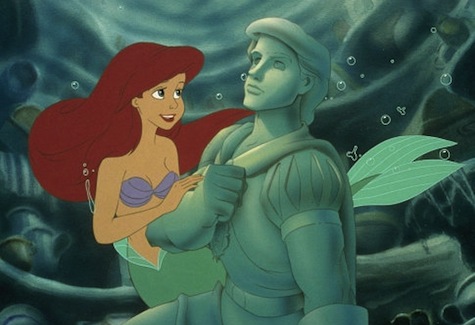
The tragedy is that, though we are all exposed—often and early—to fairytales, most of us are only aware of a tiny fraction of the hundreds of fairytale stories published centuries ago by the Grimms, Perrault, Andersen, and others. Take the original Brothers Grimm collection; it contained 209 stories, and Andrew Lang compiled over 400 stories in his many-colored fairy books. However, despite this wealth of material, if you were to ask most people to name a fairytale, odds are they would list one of a handful of stories that have been repeatedly popularized over the years—Snow White, Cinderella, Sleeping Beauty, Beauty and the Beast, Little Mermaid, Rapunzel, Little Red Riding Hood, etc. More unfortunately, the works that have survived the years often tell the same story: girl is pretty, girl is in trouble, boy saves girl, girl and boy live happily ever after. (Except, that is, for The Little Mermaid, which follows the same script but replaces the happy part with soul-crushing sadness and loss…)
Confirmation of this highly selective selection process can be found by examining the Disney animated movies, starting, of course, with Snow White and currently ending with Frozen. Because I know that a temptation to Disney-bash often creeps into such discussions, I want to state upfront that this list comes from a place of love. I grew up going to theaters and watching in breathless amazement as Maleficent turned into a mighty dragon, only to be slain by Prince Phillip’s sword through the heart. I urged Snow White not to eat the apple, and I laughed at the antics of Cinderella’s mice friends. However, this doesn’t take away from the fact that I could wish that Disney had managed to inject a little more variety into the women and girls they portrayed. With that preface, and solely for your amusement, I give you a Jack’s-eye view of the last seventy-seven years of Disney movies.
Entirely Subjective and Incomplete Timeline of Disney’s Animated Movies
1930s: Disney’s first full-length animated movie, Snow White, is the princess movie against which all others are judged. It introduces a heroine who is the “fairest in all the land,” a hero called Prince Charming, and even an evil sorceress queen who transforms into an old hag. Perfection of a sort, but it also sets the pattern for the types of female fairytale characters Disney was interested in telling stories about, a pattern—as we shall see—that continues for decades.
1940s: Not counting Mickey and Donald vehicles, Disney released three animated movies in the 1940s: Pinocchio, Dumbo, and Bambi. None of these movies had a female character that was central to the action, except, perhaps, the Blue Fairy in Pinocchio. However, it would be hard to argue that Pinocchio is not clearly the active hero of the story: he goes to Pleasure Island, he turns half-way into a donkey, and he journeys into the belly of Monstro to save Geppetto. The Blue Fairy merely shows up at the end to pick up the pieces.
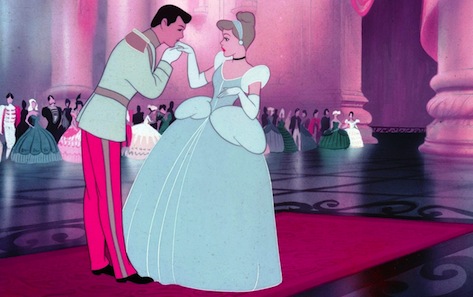
1950s: The fifties were bracketed by adaptations of two quintessential fairytale stories, Cinderella in 1950 and Sleeping Beauty in 1959. Both continued the trend of selecting out of the fairytale canon stories in which the heroine is passive, and in which rescue occurs only by the intervention of an external male actor. One could argue that the fairy godmother in Cinderella is an active agent in Cinderella’s rescue; however, she constrains the use of her powers to the task of getting Cinderella to the ball so that she can have a chance of meeting her (oddly never named) prince. Between these stories we also have adaptations of Alice in Wonderland, Peter Pan, and The Lady and the Tramp. None of these are traditional fairytales, and none change the basic pattern of active male heroes and passive female heroines. Alice might be considered active, or at least not passive, but her activity is illusory (she is asleep and dreaming the whole time), and it is driven entirely toward trying to return to her home in Victorian-era England, where women’s roles were crushingly limited, as she herself seems to recognize at the outset of the story when she wishes to instead be in a world of ‘nonsense.’
1960s: The sixties brought us 101 Dalmatians, The Sword in the Stone, and The Jungle Book. None are traditional fairytales. Moreover, the later stories are dominated by little boys—one who will become a king and another learning to master his jungle home—and the first has no central heroic character, although it does introduce the best female villain of all time—Cruella De Vil. (Sing it with me: “Cruella De Vil, Cruella De Vil, if she doesn’t scare you, no evil thing will!”) The point being, there are no female heroines to talk about here.
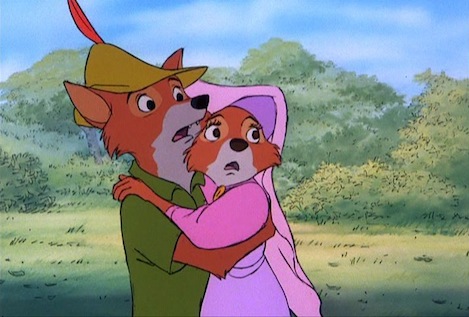
1970s: Four animated movies were released by Disney in the seventies: The Aristocats, Robin Hood, The Rescuers, and The Many Adventures of Winnie the Pooh. Only Robin Hood could be considered analogous to a fairytale, and the only major female character is Maid Marian, who waits patiently for Robin Hood to “sweep her off her feet and carry her off in style.” By the way, I know that Winnie is a girl’s name, but as Christopher Robin explains, I think quite patiently, to his father when asked about Winnie’s gender:
When I first heard his name, I said, just as you are going to say, ‘But I thought he was a boy?’
‘So did I,’ said Christopher Robin.
‘Then you can’t call him Winnie.’
‘I don’t.’
‘But you said…’
‘He’s Winnie-ther-Pooh. Don’t you know what ‘ther’ means?
Exactly, Christopher.
1980s: Most of Disney’s movies from the eighties were stories about male characters: boy fox and boy dog make friends (The Fox and the Hound), boy saves kingdom (The Black Cauldron), boy mouse saves girl (The Great Mouse Detective), and boy cat saves girl (Oliver and Company). However, the end of the decade saw the release of The Little Mermaid, a movie that many credit with reinvigorating the studio, and which also saw Disney return to its roots in fairytale. Unfortunately, they returned to a story that, in its original version, may be the most heartbreaking of all time. The Hans Christian Andersen fairytale upon which the movie is based heaps insult upon injury atop its titular Mermaid. Not only does the mermaid lose her voice, but she must suffer agonizing pain (as though she is walking on knife blades) the entire time she is in human form. Then, at the end of the story, when the prince instead marries another, the Little Mermaid, in her despair, throws herself into the sea and turns to foam. Though Disney softened Andersen’s plot considerably, the fact is that you can only do so much with a tale that requires the heroine to suffer that greatly for a man that she does not know.
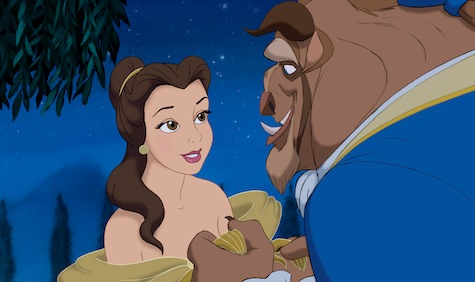
1990s: Disney started the decade of the nineties off with a bang with the release of Beauty and the Beast. Unfortunately, once again they chose a fairytale that has a heroine whose central role is to fall in love with the titular Beast. Disney followed this movie up with Aladdin, again a fairly traditional story of a princess being forced into marriage, where her only victory seems to be in having the chance to actually choose who she will marry. The Lion King introduced us to spunky and competent Nala, but she is not allowed to rescue her pride and must instead convince Simba to “man up.” The end of the decade was split between three movies with strong male leads—The Hunchback of Notre Dame, Hercules, and Tarzan—and two movies promising female leads—Pocohontas and Mulan. Unfortunately, Pocohontas turns into a traditional romance that is shadowed by the historical figure of Pocohontas, whose life was tragic and ended bitterly, separated from her people and native land by an ocean. Mulan, on the other hand, begins well—and nearly ends well. Mulan defies convention by joining the army, and then shatters gender stereotypes by single-handedly defeating an invading army and saving the emperor. Then she goes home. Waiting there is her father, who is still the head of the household, and the captain of her army unit, who has been invited to tea. We are left to wonder whether all the wonderful things Mulan has just accomplished will mean anything. Will she be treated differently, or will she be expected to fulfill the same role she so resented at the beginning of the movie?
2000s: The new millennium started out with eight years of Disney movies that could not be even remotely considered fairytales: The Emperor’s New Groove, Atlantis: The Lost Empire, Lilo & Stitch, Treasure Planet, Brother Bear, Home on the Range, Chicken Little, Meet the Robinsons, and Bolt. It is not until 2009 that Disney went back to the fairytale well and drew forth The Princess and the Frog. Unfortunately, the plot for The Princess and the Frog is based on the Grimm fairytale The Frog Prince, in which the princess is described early on as being “so beautiful that the sun itself, who, indeed, has seen so much, marveled every time it shone upon her face,” and where the only question is whether she will marry the frog or not. This foundation inevitably forces The Princess and the Frog to become a fairly standard story of “princess marries prince.”
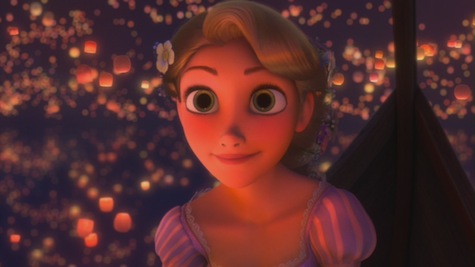
Present Day: Even Disney’s first movie of this decade, 2010’s Tangled, follows the same pattern, introducing us to a pretty cool version of Rapunzel, but ultimately still Rapunzel. There is only so much liberty you can take when the source material chosen is a fairytale in which a man sells his unborn daughter for a bunch of lettuce, and where the girl is then held prisoner her entire life until she is rescued by a wandering prince. At the end of the day Disney’s story also has Rapunzel being rescued from her life of captivity by thief and all-around rake, Flynn, then falling in love with the boy and living with him happily ever after.
So, we have journeyed to the present, or at least the present decade, and thus far the fairytales Disney has chosen to tell us are basically those same fairytales, and their relatives in kind, that Simone de Beauvoir and Andrea Dworkin were criticizing decades ago. The result is that the vast majority of people think that these types of stories are all that fairytale has to offer women.

Fortunately, things do not end there, because the thesis of this article is not that Dworkin and de Beauvoir are unassailably correct in their criticisms of fairytales. Anyone who has read the Grimm Brother’s collection or Lang or Perrault know that female roles in these stories run the gamut from passive to active, from porcelain doll to hardened adventurer, and everything in between—it simply took seventy plus years for modern popular culture to catch up. Finally, in 2012 an amazing thing happened: Pixar released Brave. Here was a movie that, while still beginning with the familiar story of a princess being forced into marriage, at least does not end with the princess succumbing to the pressure of a romantic entanglement. Instead, the story diverges from the traditional and becomes an examination of the relationship between mother and daughter—and quite beautifully, I might add.
Still, while Brave certainly has elements of Scottish folklore woven into it, it does not follow the plot of any identifiable fairytale. But, with last year’s Frozen, Disney finally has given us a glimpse into those previously unread pages of the fairytale world. Based on Hans Christian Andersen’s The Snow Queen, Frozen tells the story of not one, but two kick-butt princesses (still princesses, but you can only ask so much). What is more, much that is admirable about Frozen comes straight from The Snow Queen—no modification necessary. For example, it is from The Snow Queen that we get so many incredible female characters, including our adventurous Gerda (a more liberated version of Anna), and a host of other female helper characters (that are sadly omitted from Frozen), including a wise grandmother, a female crow, a princess that will only marry a prince as intelligent as herself, and a robber’s fearless knife-wielding daughter. What is more, the fairytale sets Gerda on a lone quest to save her platonic playmate, who happens, in a nice role reversal, to be a boy.
More interestingly, the portions of Frozen that have drawn criticism were almost all added by Disney. In Andersen’s version of The Snow Queen there is no Kristoff, there is only Gerda (who is not a princess, by the way). In fact, there is no romantic love story at all; there is no prince, no whirlwind romance, and no betrayal.
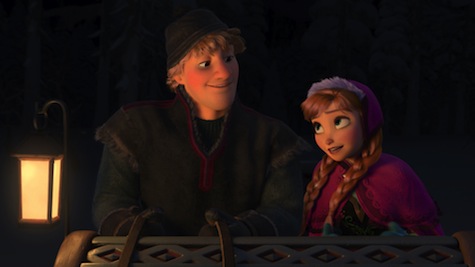
That Disney decided to tell Gerda’s story is admirable, but why did it take three-quarters of a century to do it? After all, The Snow Queen was published in 1844, just seven years after The Little Mermaid. Nor is The Snow Queen unique: The Seven Ravens, a story included in the early Grimm Brothers’ collection along with Snow White, Cinderella and Sleeping Beauty, tells the tale of a young girl who discovers that her seven brothers have been put under a curse to live as ravens and decides, on her own, to save them. Over the course of her quest she must venture to the moon and the sun and the stars, and must ultimately chop off her own finger to reach them and break the curse. There is no prince at the end of the story, no marriage, just a sister who braves everything to save her siblings. It is a brilliant story, and one that deserves to be told and retold just as often as The Frog Prince or Snow White, and quite a bit more often than The Little Mermaid.
And these are but a few examples. There are myriad other traditional fairytales where women and girls take it upon themselves—often at great personal risk—to become the heroines of their stories. The real question is not “why don’t fairytales reflect strong and powerful women?” but rather why don’t we read those fairytales that do? Or a better question still, why do we insist on selectively reading only those fairytales that tend to reflect passive female characters?
Fairytale scholar, Jane Yolen, speaks to this issue quite eloquently when she writes:
“What I am suggesting is not to ban or censor the stories. They are great and important parts of Western folk canon. But what I am asking is that we become better readers.”
Perhaps Ms. Yolen is right, and we, the readers and consumers of fairytales, must become more discerning, but I would prefer to emulate Mae West who famously said, “I used to be Snow White, but I drifted.” My suggestion is that we drift—drift away from the Snow Whites and the Cinderellas of the fairytale world. Not forever, because there is always room for stories about beautiful girls and handsome princes falling in love and getting married, but at least now and then, because isn’t there also room in the world for girls that travel to the stars and sacrifice their lives and battle with evil sorcerers—not for a prince, but because they can?
Jack Heckel is the writing team of John Peck, an IP attorney living in Long Beach, CA who is looking forward to the upcoming release of Once Upon a Rhyme, and Harry Heckel, a roleplaying game designer and fantasy author, who is looking forward to the publication of Happily Never After.










